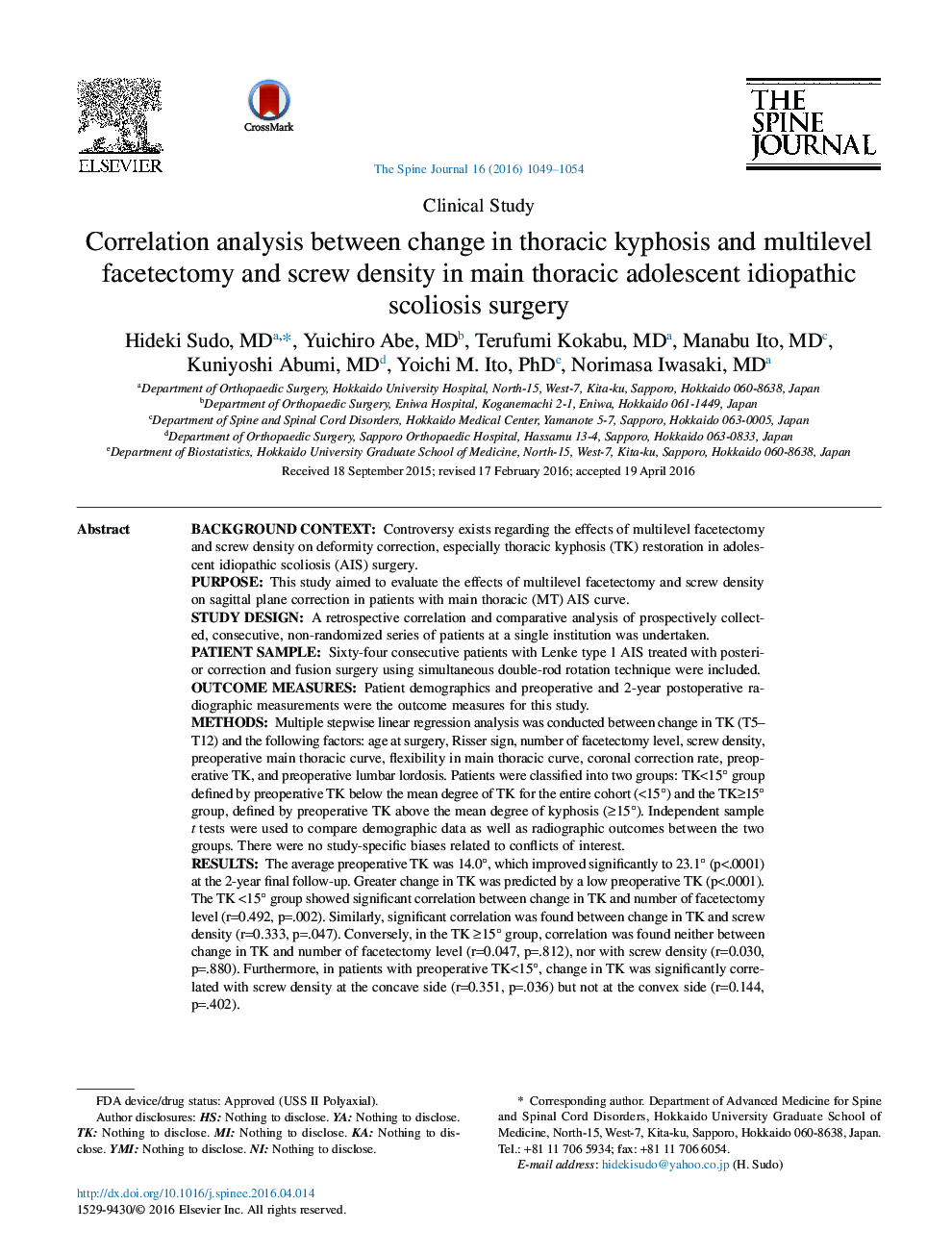| کد مقاله | کد نشریه | سال انتشار | مقاله انگلیسی | نسخه تمام متن |
|---|---|---|---|---|
| 4095723 | 1410993 | 2016 | 6 صفحه PDF | دانلود رایگان |
Background ContextControversy exists regarding the effects of multilevel facetectomy and screw density on deformity correction, especially thoracic kyphosis (TK) restoration in adolescent idiopathic scoliosis (AIS) surgery.PurposeThis study aimed to evaluate the effects of multilevel facetectomy and screw density on sagittal plane correction in patients with main thoracic (MT) AIS curve.Study DesignA retrospective correlation and comparative analysis of prospectively collected, consecutive, non-randomized series of patients at a single institution was undertaken.Patient SampleSixty-four consecutive patients with Lenke type 1 AIS treated with posterior correction and fusion surgery using simultaneous double-rod rotation technique were included.Outcome MeasuresPatient demographics and preoperative and 2-year postoperative radiographic measurements were the outcome measures for this study.MethodsMultiple stepwise linear regression analysis was conducted between change in TK (T5–T12) and the following factors: age at surgery, Risser sign, number of facetectomy level, screw density, preoperative main thoracic curve, flexibility in main thoracic curve, coronal correction rate, preoperative TK, and preoperative lumbar lordosis. Patients were classified into two groups: TK<15° group defined by preoperative TK below the mean degree of TK for the entire cohort (<15°) and the TK≥15° group, defined by preoperative TK above the mean degree of kyphosis (≥15°). Independent sample t tests were used to compare demographic data as well as radiographic outcomes between the two groups. There were no study-specific biases related to conflicts of interest.ResultsThe average preoperative TK was 14.0°, which improved significantly to 23.1° (p<.0001) at the 2-year final follow-up. Greater change in TK was predicted by a low preoperative TK (p<.0001). The TK <15° group showed significant correlation between change in TK and number of facetectomy level (r=0.492, p=.002). Similarly, significant correlation was found between change in TK and screw density (r=0.333, p=.047). Conversely, in the TK ≥15° group, correlation was found neither between change in TK and number of facetectomy level (r=0.047, p=.812), nor with screw density (r=0.030, p=.880). Furthermore, in patients with preoperative TK<15°, change in TK was significantly correlated with screw density at the concave side (r=0.351, p=.036) but not at the convex side (r=0.144, p=.402).ConclusionsIn patients with hypokyphotic thoracic spine, significant positive correlation was found between change in TK and multilevel facetectomy or screw density at the concave side. This indicates that in patients with AIS who have thoracic hypokyphosis as part of their deformity, the abovementioned factors must be considered in preoperative planning to correct hypokyphosis.
Journal: The Spine Journal - Volume 16, Issue 9, September 2016, Pages 1049–1054
